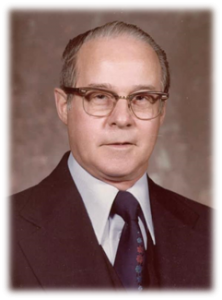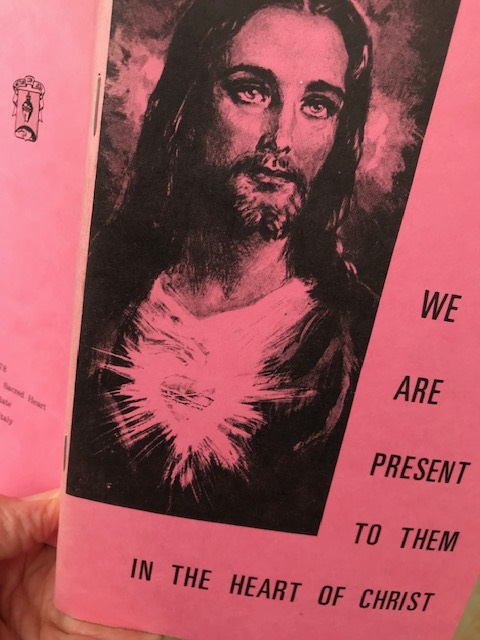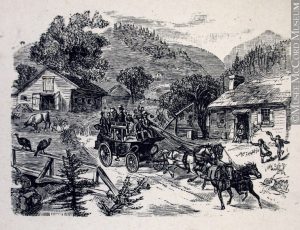Changing the Map of our Spirituality

Well before the brothers were founded, in post-revolutionary France,  those countering the revolution wore a “Badge of the Sacred Heart” as a symbol of their resistance.
those countering the revolution wore a “Badge of the Sacred Heart” as a symbol of their resistance.

To communicate their partisanship, they sewed or pinned on themselves a cloth swatch depicting the Heart of Jesus as St. Margaret Mary Alacoque saw it in her visions. The image evoked political feelings—love by royalists and scorn by those fighting to abolish royalty and church. For those who wore it, the badge served as a silent prayer for return from exile and the restoration of the king. It symbolized less a spirituality than loyalty and faith in the old regime. After the war, it was natural that our founder would choose the symbol not just as a sign of freedom to express our Catholic faith faith in the public forum, but also as a sign of the triumph of ‘God and the Throne’ over secularism. After the restoration of the practice of religion in 1815, it took a while for the symbol to lose its monarchist baggage.
Brother Polycarp
Once the brothers became well-established in the dioceses around Lyons and the restoration of the Church was no longer in question, Brother Polycarp came into close contact with the Jesuits, who were successfully promoting devotion to the Sacred Heart as a way of calling the faithful back to their parishes. They were reclaiming the Sacred Heart as an image of a loving and saving God. The Jesuits promoted indulgenced promises and devotions related to communion on first Fridays, holy hours, the litany of the Sacred Heart, and especially the Apostleship of Prayer. These devotions served the faithful well at a time when liturgy was in incomprehensible Latin. They constituted the first map of our spirituality. The Rule our founder gave us was the Rule of the Jesuit novitiate house.
As novice master, Brother Polycarp, was very fervent in integrating the Jesuits’ practices into the brothers’ formation program. In his own prayer life, Jesus under the title of the Sacred Heart was a source of great personal consolation. In his letters to the brothers, he shared his intense desire for union with the Lord and his gratitude for the gifts of love he received from the heart of Christ. In sending the first missionaries to Mobile, he commissioned them to “make known far and wide the inexhaustible treasures of the heart of Jesus.”
After the U.S. Civil War, Brother Norbert, superior general, made a visit from France to all the houses and schools in America. In his report afterwards, he named what he considered the outstanding characteristic of the brothers’ communities: “What afforded me much consolation was the great devotion the brothers and students have to the Sacred Heart of Jesus, as manifested by the observance of the first Friday of the month, by the organization of student Leagues of the Sacred Heart, and by the presence of statues and pictures in the classrooms.” Public devotion to the Sacred Heart had become an identifying characteristic of the American brothers and their schools.
To adapt the map to our institute, from that time, each superior general in turn wrote open letters called circulars to the brothers to re-interpret devotion to the Sacred Heart in the light of their times. Each superior in his time called the brothers to nourish themselves spiritually with the personal and communal prayers and practices associated with the devotion. Their faith and faithfulness enabled the brothers to transform a popular devotion into a rich affective life of prayer.
The second Vatican Council in the 1960’s had an unsettling effect on the devotion to the Sacred Heart. In an effort to diminish the incentive of indulgences as motivation for devotional acts, the Council fathers reduced the importance of widespread popular devotions that, like “too much jewelry,” as they put it, had distracted the Church over time from the centrality of scripture and the liturgy. Instead, they called Catholics to re-direct their spiritual life to the Word of God and full participation in the liturgy, which the council made accessible by very welcome translations into English. The renewal of the Liturgy was the first and, many say, the most energizing change that sprang from the Vatican Council.
Brother Maurice Ratté

In the spirit of the Council, Brother Maurice Ratté, superior general from 1970 to 1982, led a movement to convert the Institute from its devotional spirituality. He regretted that the devotional approach was having little bearing on the brothers’ ministry. Traditional devotion to the Sacred Heart tended to settle into a routine set of prayers completely separated from the daily work of the brothers with young people.
The devotional “map” had also encouraged a highly individualized, private style of relationship with Jesus. For example, Brother Maurice’s predecessor wrote a circular entitled The Sacred Heart and Me. In contrast, Brother Maurice became convinced that the integration of prayer and ministry required a complete reinterpretation of our traditional devotion.
He wrote a circular entitled, We are Present to them in the Heart of Christ. For the title, he intentionally quoted from a paragraph of a key teaching of Vatican II, Light to the Nations, which moved the Church into the modern world.[1]
Starting with that title, Brother Maurice broke new ground in three ways. First, the Them of the title refers to the peoples of the world, particularly the neediest young people who are often out of sight and out of mind.
Brother Maurice’s was a Copernican change; he rendered the word devotion obsolete. We might still use it, as we do sunrise and sunset, but, like those two words, it doesn’t jibe with what’s really going on. For Maurice it doesn’t jibe with the Church’s teaching about the Sacred Heart, which he summarizes this way: “Divine love makes our human love divine so it can heal and save and engender more love.”[2] Without being critical of acts and prayers of devotion, he presents a more engaging and more transcendental approach, which he calls a spirituality of the Sacred Heart: we, united in spirit with the spiritual heart of Jesus, are present to the needy through our prayer and ministry.[3] In proposing our spirituality, we will follow the intuitions of Brother Maurice.

Second, the word We merges us with Jesus. For Maurice, it’s no longer a question of the Sacred Heart being present to us. In the original devotion to the Sacred Heart based on the convent visions of Sister Margaret Mary, she is apart from Jesus, face-to-face with him. In Brother Maurice’s circular, there is only one consciousness; we are joined with Jesus at the heart, incarnating his presence to Them, that is to youth in need.
Third, Maurice does not take heart as an anatomical literal word, but rather as a deep and inexhaustible icon that evokes the spiritual reality of love at the center of the person of Jesus. For Maurice, the heart of Christ – his being, his divine and human love, the seat of his compassion, his soul – can be brought as a gift of presence to others through us.
An extended metaphor
After the Catholic faith could come out of hiding in France, many lay men and women grouped together and took on a religious role in public. Remember, because of the French revolution, many of the clergy had been martyred or frightened enough to renounce their faith. Many others went underground to pray in secret. The result was a drought of faith leadership. In 1816, a group of fervent young lay women led by [Saint] Claudine Thévenet of the parish of Saint Bruno in the Croix Rousse sector of Lyons began gathering to support each other in their desire for spiritual growth. They asked Father Andre Coindre, who was their new associate pastor, to accompany them. He agreed, but, at 29 years old, didn’t see himself as their master or even as their only guide. Claudine had stepped up as an experienced and generous parish leader. To describe his approach and express his mutual leadership with her, Andre used the metaphor of travel, a painstaking process in his day.

He told the ladies, “When we go alone on a long journey we fall into sadness and boredom. We get tired, melancholy, and discouraged. On the other hand, when many travel together, there is joy and expectation. There is mutual support so that the faltering receive a helping hand.”[4]
Traveling together can be for us, too, a helpful way to speak of our spiritual search. In Andre’s experience, growth in spirituality is not solitary travel; it is a voyage with trusted companions who gather close, who don’t judge the faltering, but who offer patient personal support over time. His spiritual friendship with Claudine lasted until his death, of which she had a dramatic premonition.
A Map for the Journey
Once a group of searchers forms, there are risks of wandering in the desert on one extreme and of strolling in the park on the other. The voyage could go around in circles or it could share only at a superficial level. To avoid both extremes, it needs a defined destination and a clear authoritative map. For the devout society of ladies, Andre and Claudine chose an existing approved charter for lay societies in the Jesuit tradition.
Our Brotherhood has a reliable reliable map approved by the Church for our province’s common spiritual voyage; it is the opening chapter of the Rule of Life. That chapter, of which Brother Maurice was the principal inspiration and author, lays out in fourteen sentences the spiritual beliefs, hopes, and desires deepest in our heart. Those sentences gain meaning and shape throughout the rest of the Rule for those of us who have chosen the vocation of Brother. The spiritual voyage that Brother Maurice spells out, nevertheless, are helpful for all of us, no matter our vocation. He maps out the spiritual destinations we can all aspire to reach as we seek to transcend ourselves. His map charts for us a series of voyages into our corporate heart. It is below. For our use, It is also repeated in the right hand column of every page of this website
The Map of our Heart
| “God is love.” (1 Jn 4:16) | 1 |
| Out of love God created the world and made us in the divine image. | 2 |
| Out of love the Father sent his beloved Son to be “the Way, the Truth, and the Life” (Jn 14:6) for the salvation of the world. | 3 |
| Through his incarnation, death, and resurrection, Jesus accomplishes his Father’s plan to establish on earth the kingdom of heaven. | 4 |
| Because we have believed in the Word of God and have been baptized, we have become “partakers in the divine nature” (2 Pet 1:4) and members of the People of God. | 5 |
| Our grace of communion with the Father is also a grace of communion with our neighbors. | 6 |
| Christ joins us to his own mission: he pours out his love that must flow through us to others. | 7 |
| With all men and women, God calls us to holiness in keeping with a personal vocation in the Mystical Body, which the Holy Spirit sanctifies and directs through a variety of gifts. | 8 |
| As sacrament of salvation, the Church is the source of our spiritual life. | 9 |
| She passes her faith on to us and nurtures it through sacramental grace and through the light of her teachings. | 10 |
| Our search to grow in love makes us a sign in the Church, a living reminder to all people of the need for conversion of heart, Christian friendship, and communion in diversity. | 11 |
| We desire to be at the service of our contemporaries, who are asking us urgent questions. | 12 |
| Concerned about their happiness and salvation, we are “present to them in the Heart of Christ.” (LG 46) | 13 |
| We work with them in building the earthly city so that it will be founded on and renewed in Christ. | 14 |
2
Changing the Map of our Spirituality
Prayer, Reflection, Exchange
Prayer–Lead us, Lord Brian Doerksen
Here I stand
At a crossroads again
Like you said
In time the seasons change
Looking back
I recall the blessings and the pain
But now I turn my heart toward
What is still to come
I want to dream again
Lead me, Lord
Into a life of fruitfulness
Prepare my heart to risk again
As I trust,
Taking simple steps of obedience I know
That you will lead me, Lord
The Grace I Seek …
Loving God, you love me and saved me out of love, and you are guiding me to your heart through Brother Maurice’s map approved by the Church. May it lead me and our brotherhood to heartfelt happiness. May it confirm me in your divine mission of Love.
Father Coindre, pray for me. Brother Polycarp, pray for me. Saint Claudine, pray for me. Brother Maurice, pray that I grow with your the support of your map in understanding of the Way, the Truth, and the Light whom I seek.
Reflective Reading
Read slowly through “The Map of our Heart”
Where did you feel resistance? … resonance … questions?
What feelings and reactions did you have as you you read the “map …
… in connection with which lines or expressions?
Notice Important Features of the Map:
Five panels (as shaded)
Lines 1-4 Our image of God
Lines 5-7 God’s desire to be united with us
Line 8 God’s call to be instruments beyond ourselves
Lines 9-11 Our being in the Church
Lines 12-14 Our mission in the world
Two movements
Lines 1-10 Gifts we receive from God
Lines 11-14 The response we desire to make
Pronouns
The first person plural pronouns (we, us, our) express inclusiveness, cohesiveness, sharing, varied vocations and gifts, partnership.
The third person plural pronouns (them, their) refer to those to whom we are sent, just as in the title of Brother Maurice’s circular.
The third person singular masculine pronouns (he, his, him) refer to Christ—Word, Way, Truth, and Life.
The third person singular feminine pronouns (she, her) refer to the Church living in the Holy Spirit.
There is no first person singular pronoun.
Trinitarian
God is relationship and creates relationships:
The Father (lines 1-3), the Son (lines 4-7), and the Spirit (lines 8-11) engage us in distinct ways.
Five movements of love
- God’s love for us (1-4)
2. Our love of who we are in all our dignity (line 8)
3, .Love among ourselves (11 communion)
4, Friendship (11)
5. Love of others, our contemporaries (lines 6, 12-14)
Scripture Reading of Verses Cited in the Map.
By reason of their inclusion, they become our favorite passages.
Read and ponder them from your bible. The video clips below might help deepen your appreciation for thse scriptures. The first is a classic archive of Clarence Rivers. It is a file made prior to today’s consciousness of the importance of inclusive language in liturgy.
Line 1—1 John 4: 7-16 (verse 16)
Line 3– 1 John 4:1-14 (verse 6)
Lines that speak
Choose words, lines or phrases from the map which you find most consoling, most challenging, or especially rich in meaning for you. Dwell on them. Write them in your journal.
Feel the Movement
A map is a chart to direct us from one point to another. It makes a series of meanders. Brother Maurice’s map starts in the timeless spiritual realm of God, who moves with us into the world, then through the Palestine of Jesus’ earthly life. God then passes with us through the church of our baptism into the arms of our parents. Then, from our neighborhood, we move into the present to live among men and women who incarnate Christ beyond our family and culture. God then leads us into the Church and its community, where we are in touch with people very different from ourselves who share the Christian faith. The map’s final destination is not the Church. It is the earthly city where we find ourselves being challenged by contemporaries with urgent concerns. The Father, the Son, and the Spirit leave us there to be responsible for the mission of intervening in their name.
Musical Reflection
Listen to “The map of my heart” by Grammy winner Mary Chapin Carpenter
The map of my heart looks a lot like yours
from the one way streets to the old detours
to the dark dead ends with their missing signs
the sun and the moon and the roads that wind
like the stories we tell tracing the routes
wind in my ears, dirt on my boots
The map of my heart is torn at the corners
from ignoring the warnings, disobeying the orders
I’ve been lost in a crowd, found in solitary
I learned how to travel with just what I could carry
towards the vast unseen and the great unknown
the map of a heart is all that we own.
Leaving safety to chance and reason behind
x marks every spot I thought I’d lost my mind
I didn’t think that I could but I couldn’t stop trying
And I can’t stop trying to hold in my hands
that moment I could feel my heart expand
with more love than I thought could exist in the world
the hollows were gone, the emptiness filled
a life transformed down to the bone
this map of my heart is all that I own
Do we ever stop longing and looking for home
do we ever stop feeling apart and alone
do we ever stop dreaming of where we belong
This map of my heart looks a lot like yours
This map of my heart looks a lot like yours.
— Listen again as though it is being sung to you by Jesus …
— as though it is being sung to you by Andre Coindre / Claudine Thévenet/ Brother Maurice.
— Make it your own song of prayer to the Lord.
Personal Prayer
Listening and Mutual Support
Footnotes:
[1] Lumen Gentium, 46
[2] We are Present to them in the Heart of Christ, 60
[3] ibid., 29
[4] Jean-Pierre Ribaut, SC and Guy Dussault, SC, Andre Coindre: Writings and Documents 4, p. 37



